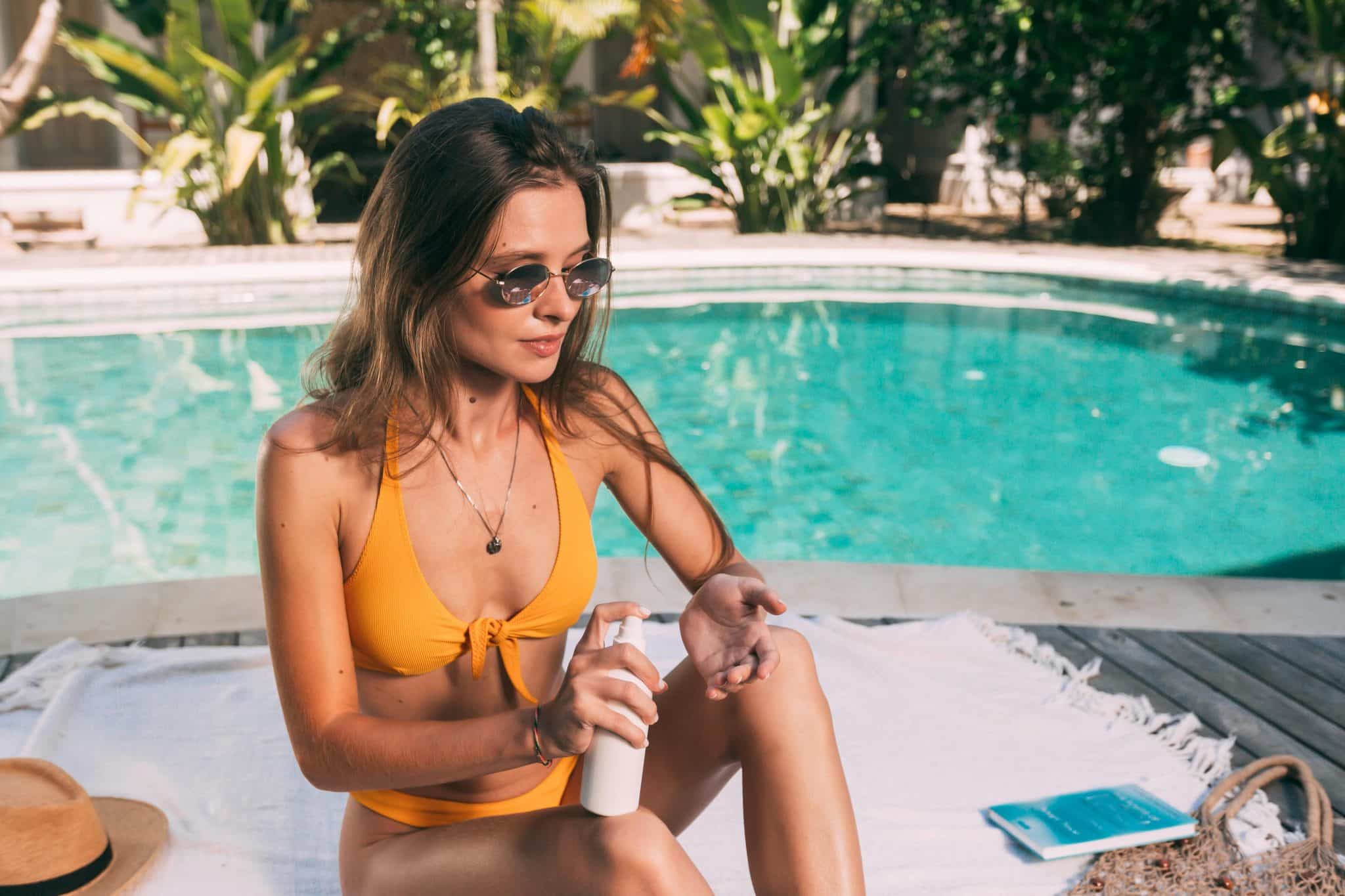A long day on the trail or in the water can leave skin tight, dry, and irritated. Sun, sweat, chlorine, and salt all pull moisture away and weaken the skin’s natural barrier. The best way to soothe skin after hiking or swimming is to cleanse gently, rehydrate with moisture, and shield it from further damage.
Immediate care makes a big difference. Rinsing off sweat, dirt, or chlorine right away helps prevent irritation. A light moisturizer or soothing spray can calm redness and restore balance. Simple steps taken soon after the activity set the stage for healthier skin recovery.
Lasting comfort comes from more than quick fixes. Protective habits, like using sunscreen and replenishing hydration after outdoor activities, keep skin strong over time. With the right routine, anyone can enjoy the outdoors without dealing with lingering dryness or discomfort.
Immediate Steps to Soothe Your Skin
Skin often feels tight, dry, or irritated after long hours in the sun, on trails, or in the water. Quick care right after activity helps reduce discomfort, maintain hydration, and protect the skin barrier.
Rinse Away Chlorine, Salt, and Sweat
Chlorine from pools, salt from the ocean, and sweat left on the skin can cause dryness and irritation. A rinse with cool or lukewarm water removes these residues before they damage the outer layer of skin. Harsh scrubbing should be avoided because it can strip natural oils.
A short shower works better than soaking in hot water. Hot water can worsen dryness and make redness more noticeable. Focus on areas where sweat and salt build up, such as the back, shoulders, and chest.
For those with sensitive skin, a quick rinse immediately after activity prevents flare-ups. According to elireskincare.com, simple washing habits are often the first step toward keeping skin calm and balanced.
Cleanse Gently with Mild Products
After rinsing, a mild cleanser helps remove leftover residue without harming the skin barrier. Fragrance-free and sulfate-free formulas reduce the chance of irritation. A gel or cream-based cleanser often works better than foaming types for dry or sun-exposed skin.
It is best to apply the cleanser with the hands rather than a rough sponge. This method avoids unnecessary friction. A gentle circular motion lifts dirt and sunscreen while keeping the skin comfortable.
People with very dry or sensitive skin may benefit from cleansers that contain hydrating ingredients like glycerin or aloe. These provide light moisture while cleaning. Choosing a product that matches skin type makes a noticeable difference in how refreshed the skin feels afterward.
Apply Cooling Compresses or Gels
Skin often feels warm or tender after long outdoor activity. A cool compress helps calm this heat. A clean washcloth soaked in cool water and placed on the skin for several minutes provides quick relief.
Aloe vera gel or lightweight after-sun gels can also reduce discomfort. These products add hydration and create a soothing effect on overheated areas. Keeping them in the refrigerator for a short time before use increases the cooling benefit.
Areas most exposed to the sun, such as the face, shoulders, and arms, often respond well to this step. Applying a thin layer rather than a thick coat allows the skin to absorb the product more evenly.
Restoring and Protecting Skin After Outdoor Activities
After hours in the sun, water, or wind, skin often feels dry, tight, or irritated. Proper care helps calm discomfort, replace lost moisture, and guard against further harm from UV rays or environmental stress.
Hydrate and Moisturize Thoroughly
Outdoor activities often strip skin of natural oils and water, leaving it dry. Rehydration starts inside, so drinking plenty of water throughout the day helps restore balance. Eating water-rich foods like cucumber or melon also supports hydration.
Topical care matters just as much. A lightweight, fragrance-free moisturizer locks in moisture and helps reduce tightness. Creams with ingredients like glycerin, aloe, or hyaluronic acid attract water to the skin’s surface and make it feel more comfortable.
For very dry areas, a thicker ointment or balm works better than lotion. Applying it right after a shower helps trap water in the skin. This routine keeps skin soft and prevents peeling after sun or chlorine exposure.
Soothe Irritation and Redness
Prolonged sun or wind exposure often leaves skin warm, red, or tender. A cool shower or compress helps lower skin temperature and ease discomfort. Avoid hot water, which can make irritation worse.
Products with calming ingredients such as aloe vera, chamomile, or cucumber extract reduce redness and provide relief. These should be alcohol-free to avoid stinging or further dryness.
For sunburned areas, over-the-counter hydrocortisone cream may help reduce inflammation. However, it should be used only for short periods. Loose, breathable clothing also allows skin to heal without friction or added irritation.
Footwear choices matter as well, since damp or tight materials can cause additional irritation after hiking or swimming. Natural fibers are more breathable and help reduce moisture buildup. Opting for cotton socks for women can keep feet cooler, minimize friction, and support skin recovery after long outdoor activities.
Replenish Skin Barrier with Serums or Creams
The skin barrier often weakens after long exposure to UV rays, saltwater, or chlorine. Restoring it requires targeted products that supply both hydration and nourishment.
Serums with antioxidants such as vitamin C or niacinamide help reduce damage from free radicals and support repair. Ceramide-rich creams strengthen the outer layer of skin and improve resilience.
Applying these treatments at night allows skin to recover while the body rests. Layering a serum under a moisturizer creates a protective shield and helps prevent future dryness or sensitivity. Consistent use keeps skin healthier and more resistant to environmental stress.
Protect Skin from Further Damage
After an outdoor activity, protection does not stop once the day ends. Shielding skin from additional harm is just as important as soothing it.
Broad-spectrum sunscreen should be applied daily, even on cloudy days. Reapplication is necessary if spending more time outside. A mineral-based formula with zinc oxide or titanium dioxide provides steady defense without irritating sensitive skin.
Protective clothing like wide-brimmed hats, lightweight long sleeves, and sunglasses adds another layer of defense. Staying in shaded areas during peak sun hours also reduces risk. These steps help maintain the progress made by hydration and repair treatments.
Just as the skin benefits from protection after a long day outdoors, so do the devices we rely on during hikes or swims. Phones are often exposed to water, sand, or accidental drops when used for navigation or photos. Durable Apple iPhone 17 Pro Max cases provide extra security without adding unnecessary weight, helping ensure devices stay safe and functional in outdoor environments.
Proper care after a day outdoors helps the skin recover from sun, salt, or chlorine exposure. Simple steps like gentle cleansing, rehydrating with moisturizer, and applying soothing products reduce dryness and irritation.
They should also protect their skin barrier by avoiding harsh soaps and using sunscreen regularly. These habits keep the skin balanced and more resistant to future stress.
By following a consistent routine, anyone can maintain healthier skin and feel more comfortable after time spent hiking or swimming.








